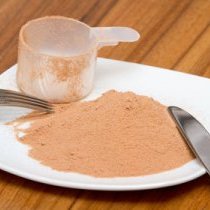FEMALE MUSCLE

Tammy Strome is a Transformation Coach, Fitness Intuitive and IFBB Pro with 17 years in the industry as a Transformation specialist, Life Coach and Supplement Expert. She uses a combination of science, insight and intuition to help her clients sculpt their bodies and transform their lives. For more info on Tammy please visit her website at www.tammystrome.com or follow her on social media at FB: TammyStromeIFBBPro, Instagram @tammystromeIFBBPro and Twitter: @tammystrome

What is in your protein
In recent times we’ve heard a fair bit of talk on the subject of protein spiking. This is also referred to as nitrogen spiking and amino spiking.
This hot topic has come into focus as some supplement companies are facing allegations that they have been spiking their protein formulas.
What is protein spiking?
Protein spiking is when additional nitrogen-containing compounds have been added to a formula in order to make the formula appear to have more protein than it actually has.
Amino acids are an example of nitrogen-containing compounds. Now you may think that amino acids are proteins, but they don’t actually become proteins, in the true sense, until they’re reformed in the body from protein that has been broken down from the foods we eat. They’re then reformed into chains connected by peptide bonds. These are the proteins that are used by the human body. Food proteins contain nitrogen, and they’re the only macronutrient in our diet that does. Carbohydrates and fats don’t.

You might see where I’m going with this now.
Amino acids can pass a nitrogen test because they contain nitrogen just like protein does. This is why they’re used in protein spiking. Glycine and taurine are two of the more common aminos used because they are inexpensive.
Why is this happening and why should you care?
The companies that are doing this are doing this to increase profit margins and sell at lower prices. Customers are demanding the best proteins at the lowest prices, and those two really don’t fit together. The end result is that customers might get the price they want but not the protein.
If you’re training hard to build muscle or lose fat, then you count every gram of protein that goes into your body along with everything else to make sure you keep your body in a positive nitrogen balance. You want to keep your muscle or build your muscle. Cutting corners in your protein formula could cut your results.

Are added amino acids bad?
No. Many amino acids, including glycine and taurine, have relevant benefits to support training, recovery, and muscle growth; however, they are not to be counted as part of the total protein amount. They should be added and listed with their dosages on the label.
So what red flags should you watch for that could help identify a product that has been protein spiked?
1. The amino acids are listed in ingredients but dosages aren’t identified. They’re likely being counted as part of the protein content. These products should list the amount of each amino added and also state nitrogen score versus whole protein score.
2. The product claims to be one of the most expensive sources of protein yet this isn’t reflected in the pricing (e.g., New Zealand whey isolate).
There is also the case of total dishonesty where there will be no aminos listed. Unfortunately, that one is harder to catch because more expensive testing methods are required to uncover that information.
I do all my homework on supplements, and I stand by those that I know engage in the creation of authentic and high-quality formulations.
Do your own research on protein spiking and you will, no doubt, find some information that will help you make more informed product choices.
For information on amino spiking, click here! And for an article about reading nutrition labels more closely, click here!

